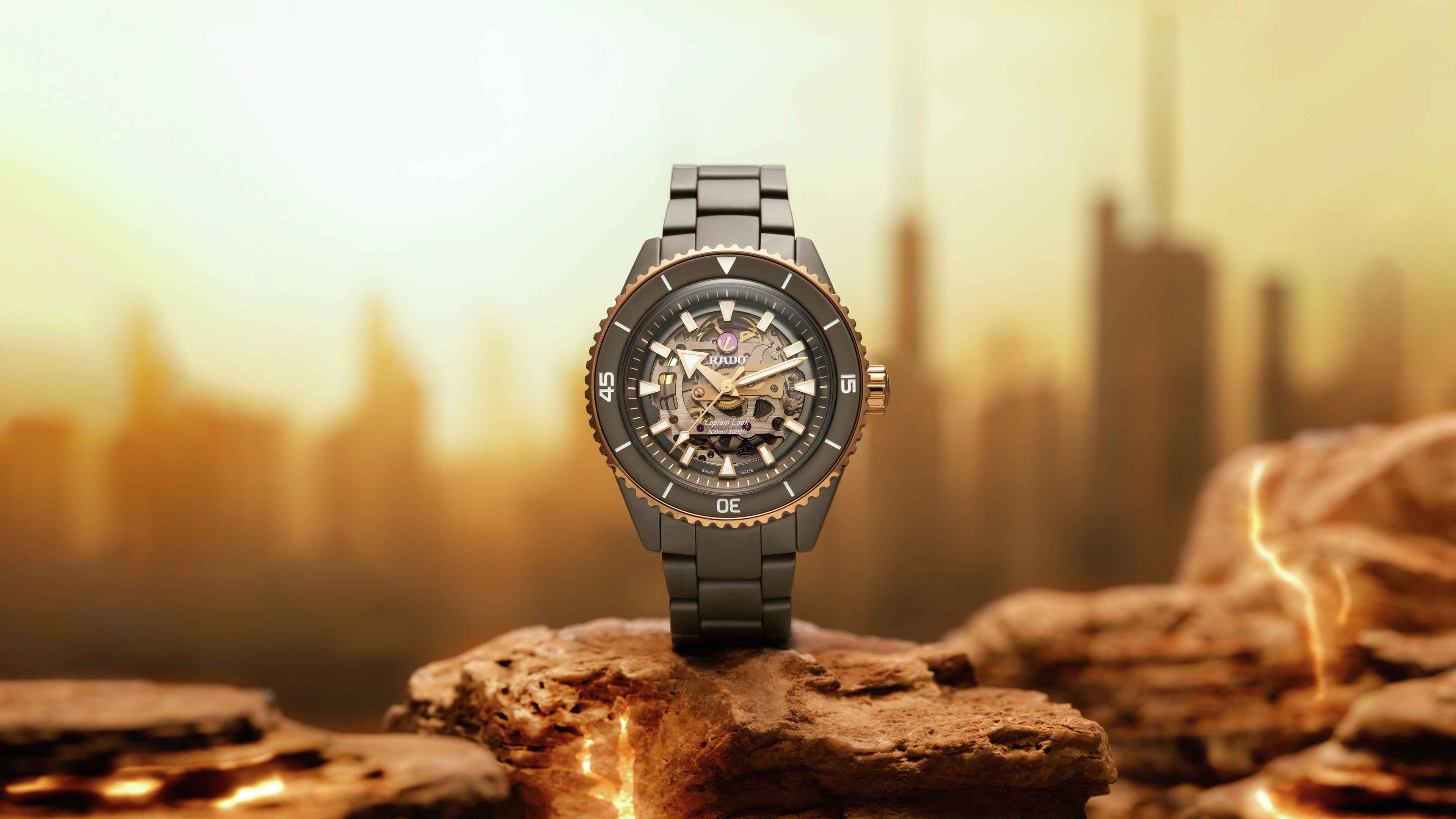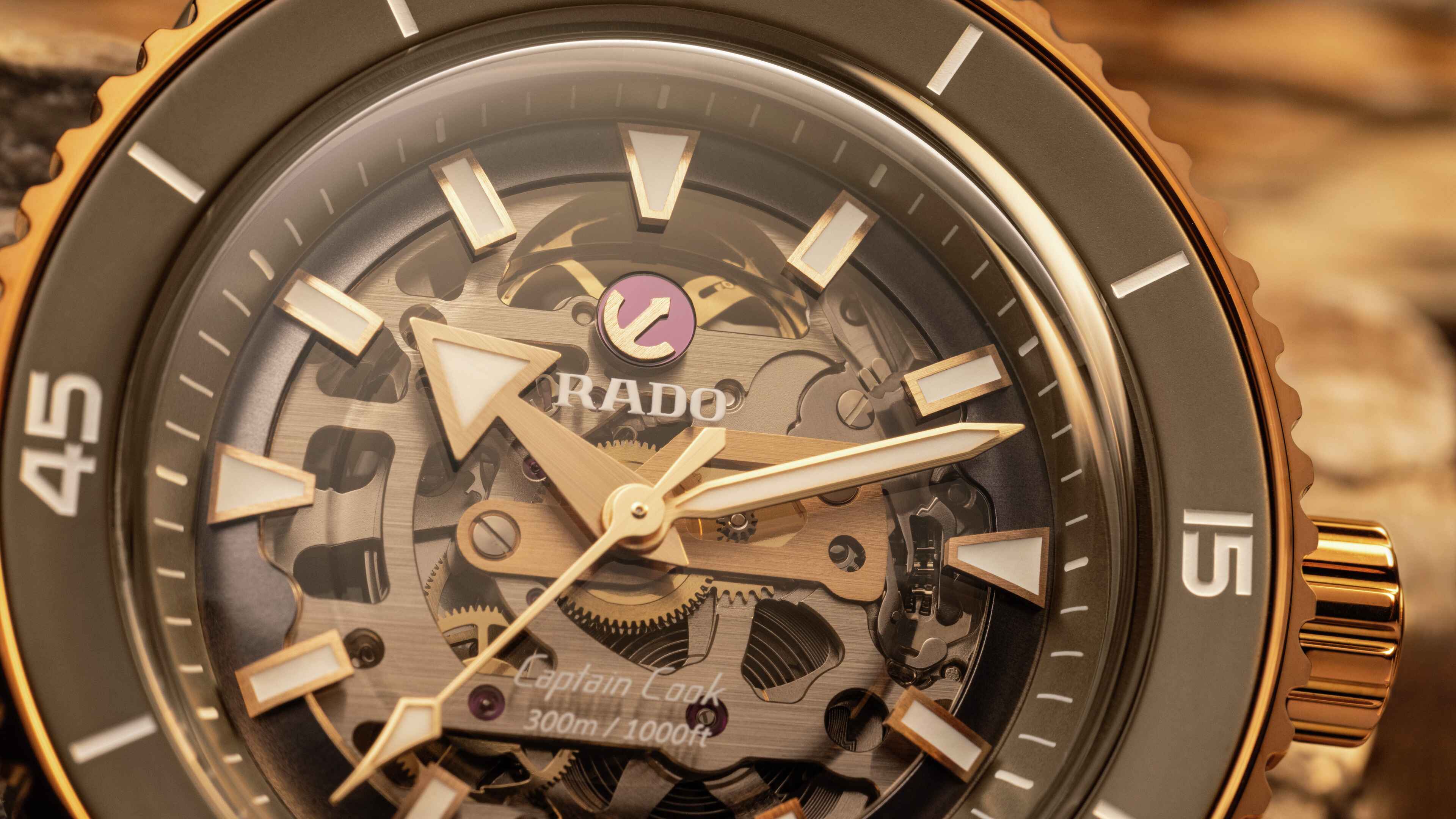In a world now saturated with every conceivable type of dive watch, it takes a truly special design to stand out. Fortunately for Rado, they had one as early as the 1960s. Riding the wave of dive watch trends, Rado released the Captain Cook in 1962. Named after the British explorer Captain James Cook, the watch gained a following for its excellent legibility, distinctive concave bezel, domed crystal, and impressive water resistance of 300 meters.
Since then, the Captain Cook line has expanded significantly, featuring various case sizes, materials, colors, and complications, each adding a fresh twist. The latest addition is the Captain Cook High-Tech Ceramic Skeleton in a rarely seen shade of olive green, designed with the urban adventurer in mind. It may be difficult to imagine how a nostalgic dive watch evolved into this modern and technical piece, but as with everything Rado has done, it was an innovation-driven journey.
Rado’s High-Tech Ceramic isn’t just a superlative; it was first introduced in 1986, long before the rest of the industry embraced ceramic. Living up to its title as the “Master of Materials”, Rado aimed to create ceramic that was sensuously smooth, highly durable, extremely scratch-resistant, and surprisingly lightweight.
Through extensive research and development, Rado discovered how to calibrate and use pure powders of aluminium oxide, zirconium oxide, and silicon nitride with perfectly uniform grain sizes. These powders are then mixed with a plastic carrier medium and injected into precision moulds at pressures around 1,000 bar. Once cooled, the pieces are removed from the moulds and the carrier agents dissolved.
(Related: Rado's new Captain Cook ceramic watches are a go for diving)
These pieces later undergo sintering at 1,450 deg C, a precisely controlled process that imparts the ceramic with exceptional density and hardness that surpass regular ceramics. During sintering, the moulded elements shrink as particles tighten and porosity disappears, necessitating precise calculations to account for a roughly 23 per cent change in dimensions.
The final product, be it a watch case or other component, boasts a hardness of 1,250 Vickers (a rating only common in specialized industrial materials), and is ready for diamond-tool machining and finishing. This ground-breaking approach results in sturdy yet finely finished ceramic watch cases, exemplifying Rado's commitment to technological advancement and precision craftsmanship.
When the Captain Cook was revived in 2017 in response to those who have grown hungry for heritage designs, it had plenty material advancements at its disposal. By the time the first Captain Cook High-Tech Ceramic Skeleton was unveiled last year, the once-retro Captain Cook had developed a decidedly contemporary look. This transformation was thanks to the use of Plasma High-Tech Ceramic, which gives off the high sheen of metal, and a skeletonized movement.
(Related: This Rado watch is ahead of the curve)
This 2024 follow-up in olive green is equally sophisticated. The ceramic case and triple-row ceramic bracelet feature a matte finish, while the rose gold-colored PVD stainless steel bezel and matching accents on the dial and crown provide a gleaming contrast. For a sportier look, a green rubber strap option is also available. The back of the 43mm case reveals the automatic R808 movement, which includes a Nivachron hairspring, an 80-hour power reserve, and a robust 300-metre depth resistance. Now you’re all set to conquer the concrete jungle in style.
For more information, click here













 Back
Back
